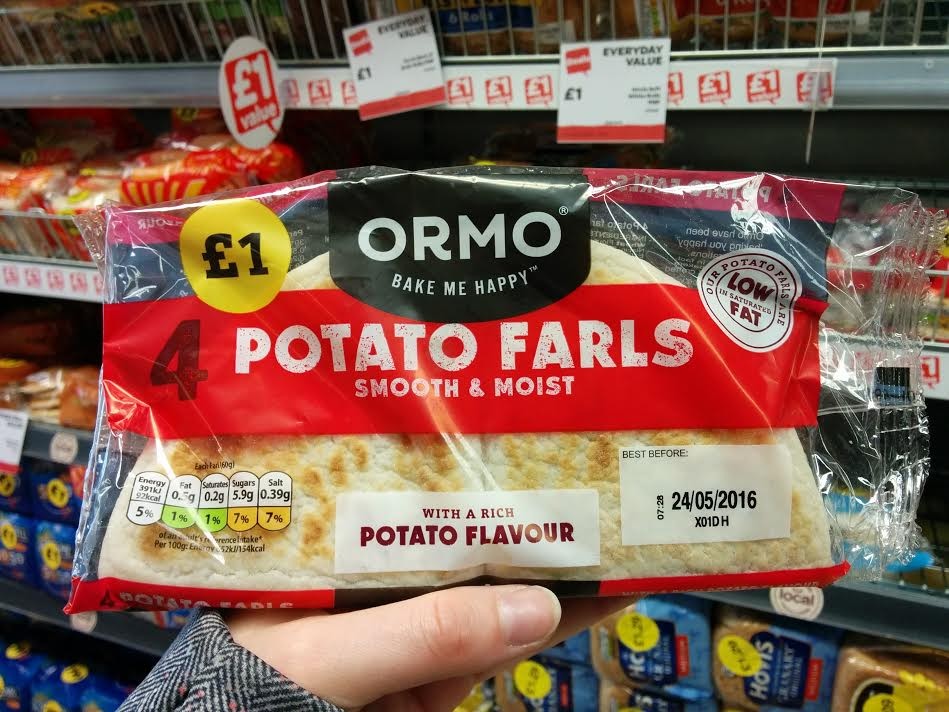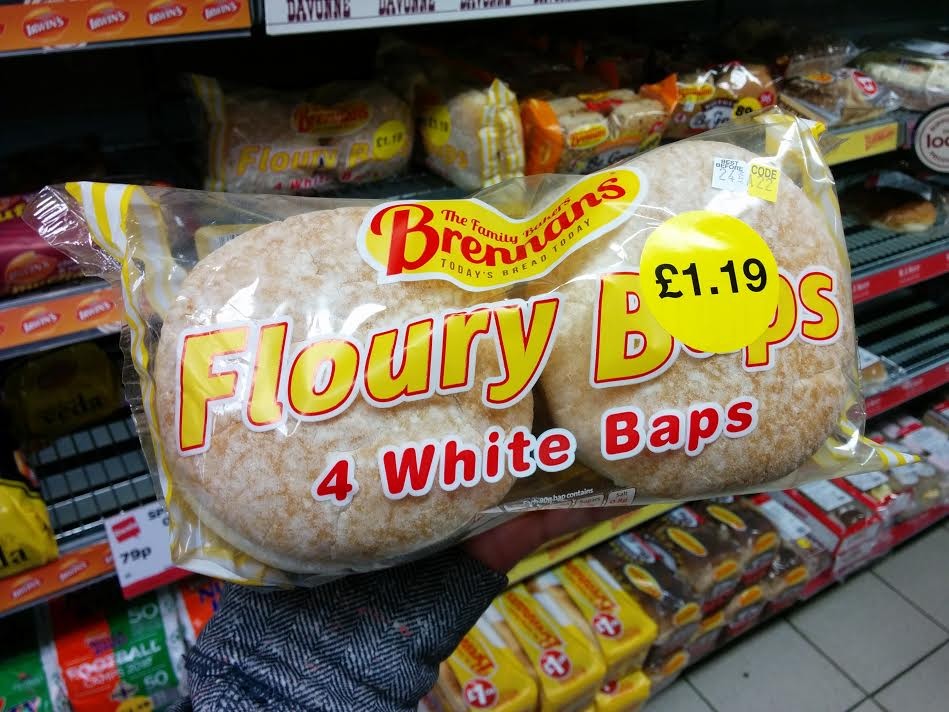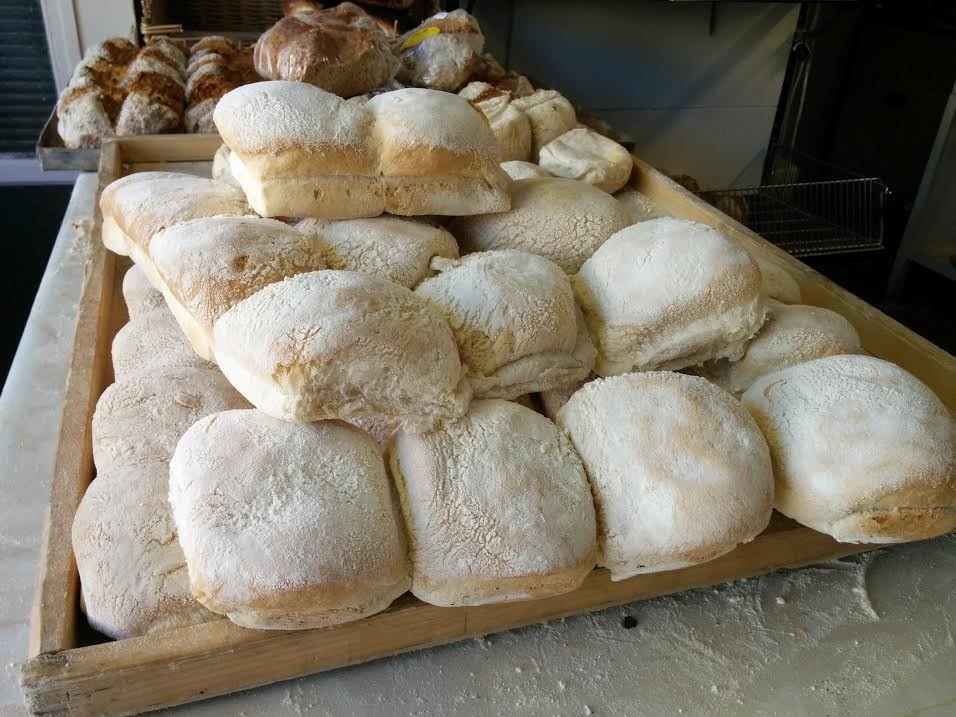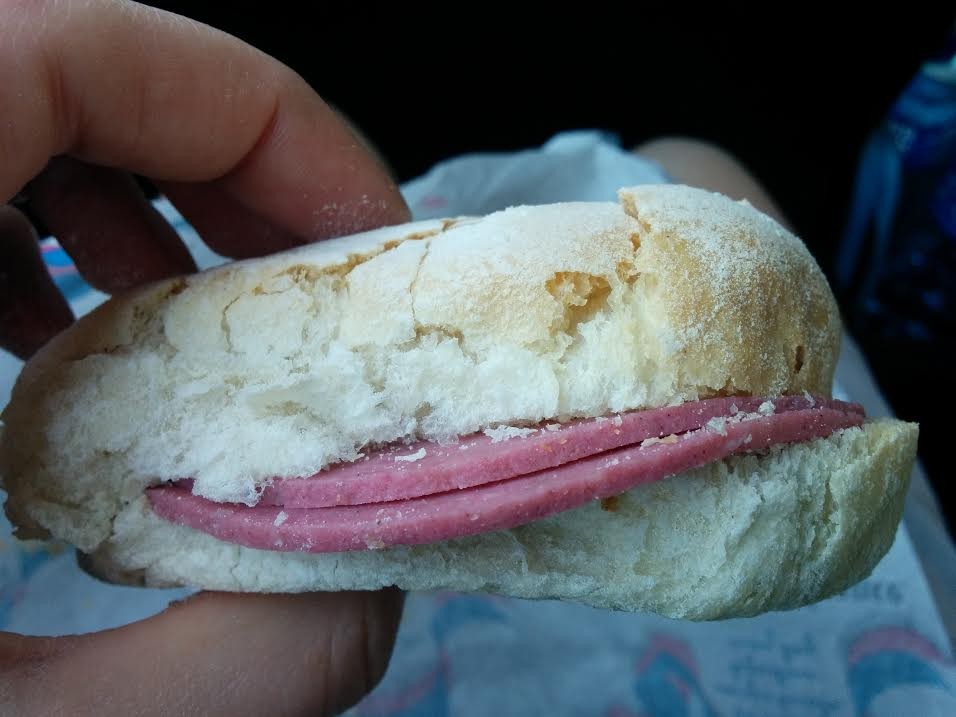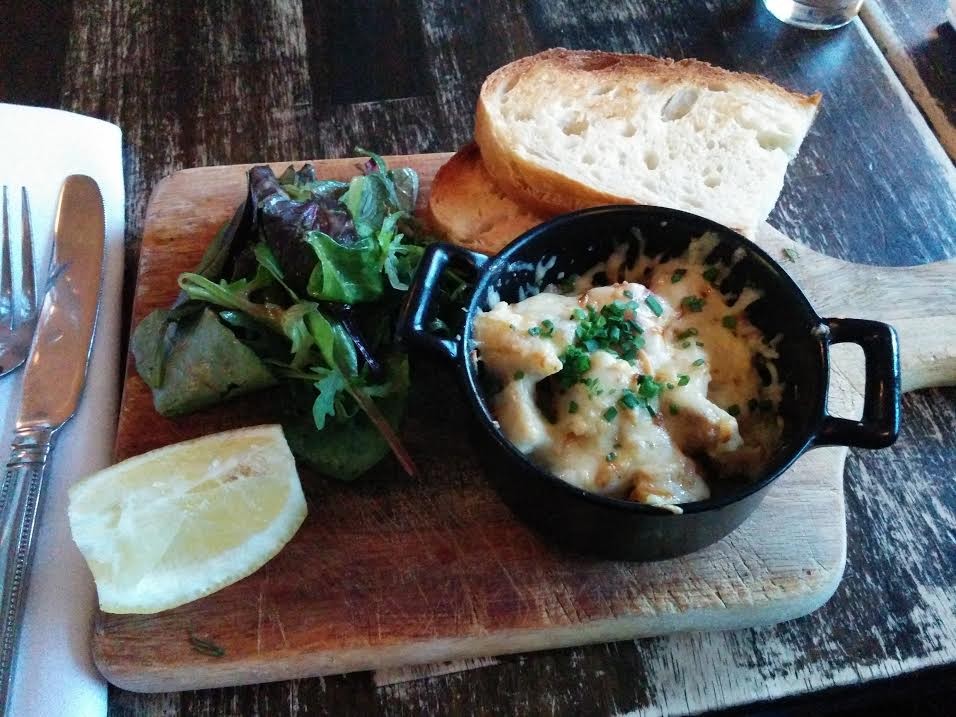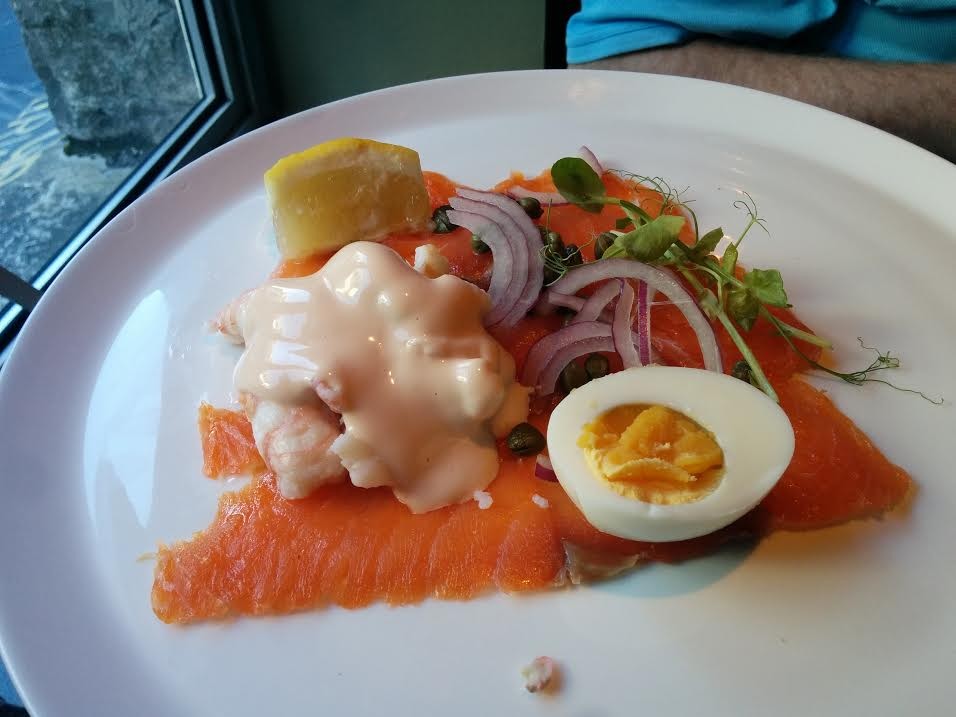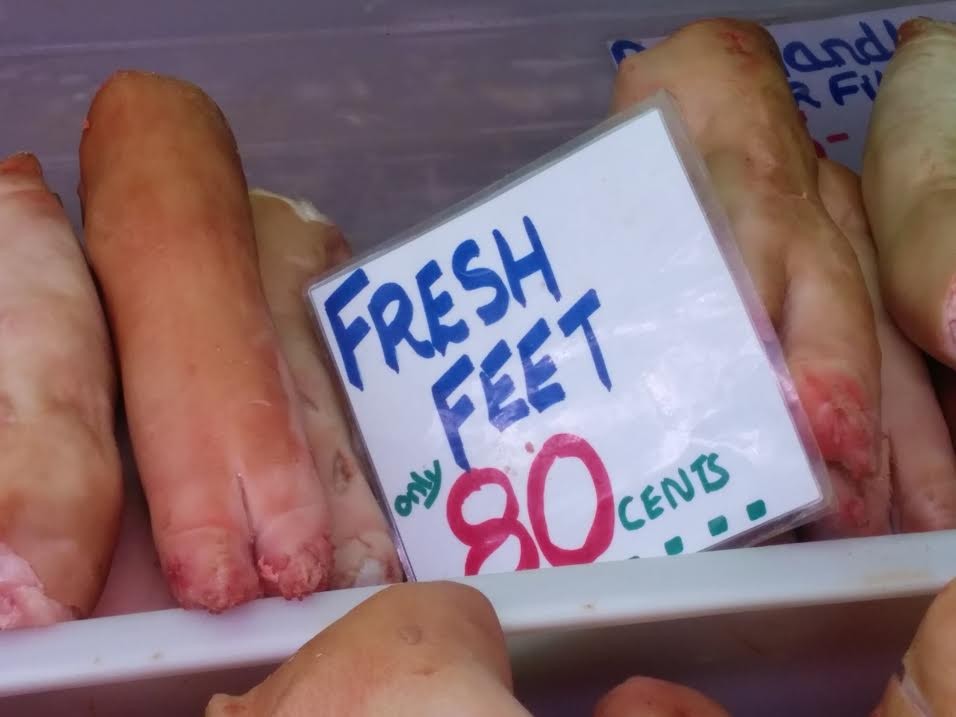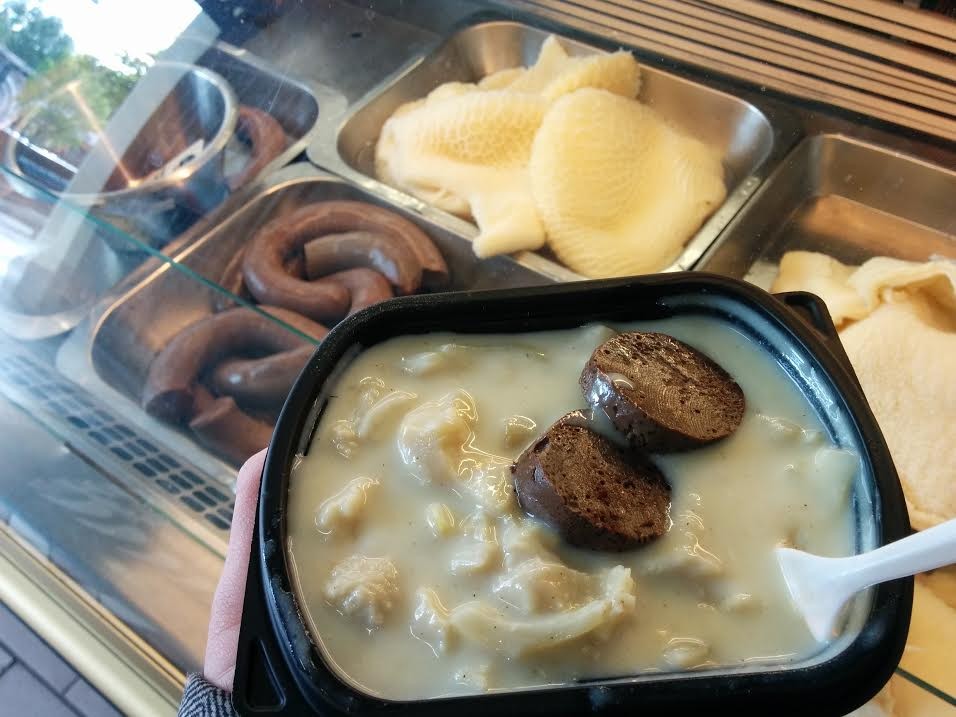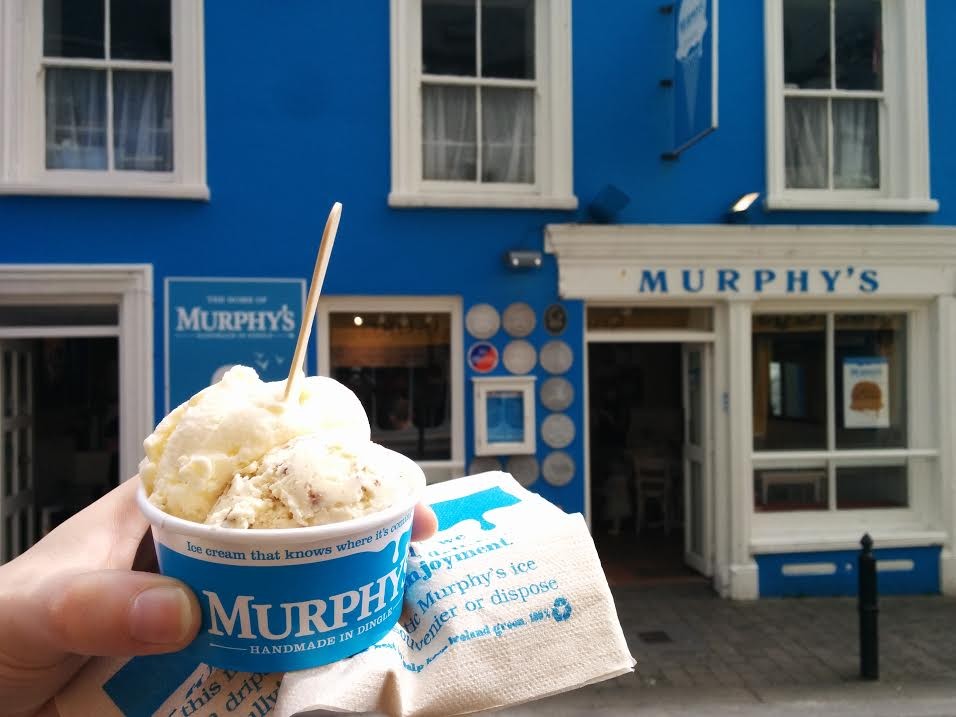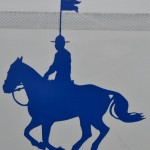In this series so far:
A Full Irish Breakfast
Irish Pubs
Ireland: Street Foods
Street food, pub food, breakfast… I sampled as much as I could on my 10 days in Ireland. But 10 days is hardly enough time to master the intricate details of a nation’s (2 nations!) regional foods. One would have to become an expert on cheeses, farmed meats & game, obscure hyper-local dishes and the plethora of seafood off Ireland’s coasts. Not to mention, there seems to be a lot of variance and pride in meat puddings and sausages. I did what I could with the time that I had and I present to you some of my discoveries.
A word about bread…
The Irish love their bread. Of course, we always hear about soda bread but this is just the tip of the iceberg. I explored a grocery isle and discovered wheaten bread, soda bread and potato bread – all available as “farls” (flatbread wedges).
As far as I can tell, the word for any kind of hamburger-type bun is a “bap”.
But just to make things confusing, there are particular types of baps…
Belfast Baps
I didn’t know where to find these, but the girls at the front desk of my hotel told me they are quite common in the west side of Belfast at the “old school bakeries”. To my delight, one of the employees offered to bring me a bap the next morning from her neighbourhood bakery. Sure enough, as I was checking out of the Jury’s Inn she showed up with the goods! My response: “Ho-ly! Is it always this big?!” I think the hotel staff got a kick out of my unconventional interests. Well, there is more to Belfast than the Titanic, say I! There are also Titantic-sized baps! And fantastic hospitality to boot.
I tore this thing apart with my bare hands (which I am told is the proper method) and we filled it with local cheese and potato crisps in the car before hiking the Giant’s Causeway.
Waterford Blaas
Whether or not this is technically a bap is controversial. Some say this is an entity of its own, and indeed, the blaas of Waterford have “Protected Geographical Indication status” through the EU. It is said they were introduced by the Huguenots in the 17thC and that “blaa” is derived from the word “blanc” (French for “white”), though this is somewhat unfounded.
These buns are basically just flour, water and yeast and are distinguishable by their floury tops. These are so popular in Waterford that they often sell out by the end of lunch time.
Waterford blaas are typically eaten for breakfast with loads of butter, but they are also present at local Spars ready to be filled with breakfast meats. I also hear they are great with aged cheddar and onion flavoured Tayto crisps!
In the past (more than now) they were commonly filled with “red lead” which is a red-coloured luncheon meat. When I pointed at it, the lady at the deli counter referred to it simply as “luncheon”.
Chester Bread (Gur Cake)
“Gur Cake”, so-called in Dublin because it was a cheap working class food that “gurriers” (young hooligans) would eat when they skipped school and got up to trouble. In other parts it’s called Chester Bread or apparently “grudge” (in Cork). It’s just bakery leftovers (bread crumbs, dried fruit and sweetener formed into a thick dark paste and sandwiched between two layers of pastry. It’s not exactly something I would scour the country for, but a regional curiosity nonetheless.
Seafood
I touched on seafood a bit in my piece about Irish Pubs. I’m not going to pretend to be an expert on Irish seafood, but I’ll mention a few things that I observed.
The Irish are not a particularly seafood-loving people, despite living on an island. However, there is seafood aplenty on the west coast (Galway, Dingle, etc.) and in Dublin. Oysters, mussels, scallops, prawns and crab are quite common. Cod, haddock, hake, plaice, lemon sole, whiting, seabass, mackerel and monkfish are aplenty. Smoked salmon and smoked haddock dishes are predominant. West coast wild Atlantic salmon is available, which is exciting because I can only get the farmed stuff here in Canada.
Apparently the quintessential seafood restaurant in Galway is McDonagh’s, but we wanted something a little fancier that day and enjoyed our meals at Kirwan’s Lane.
Traditional Cork Cuisine
Cork has some particularly old school traditions of interest. Cork City was traditionally a meat exporting hub, and while the expensive cuts of meat were shipped off, the odds ‘n ends and offal were eaten by the locals. Head over to the English Market and you’ll see a few of these items:
Crubeens are boiled and/or battered and deep fried pigs feet. I didn’t find the battered version, but pig’s trotters are readily available for sale.
Spiced Beef was described to me as sort of a corned beef with certain spices rubbed on it, and it was traditionally eaten at Christmas. I found some at the market but didn’t get to try it. I know Rising Son’s Brewery had a spiced beef sandwich on their menu but I couldn’t make any room for it.

I did, however, save room for the pièce de résistance: tripe and drisheen. This dish is available at the English Market ready-to-eat, if that’s your prerogative. I am committed to my cause, so I managed to force down a few bites.
Tripe and drisheen contains everybody’s two favourite foods: tripe (the honeycombed inner lining of cows stomach) and blood pudding (not the yummy breakfast kind, but the gelatinous, congealed animal blood kind). Tripe and onions are cooked in a cream sauce with the drisheen.
Now I don’t want, you, my readers, to leave with a bad taste in your mouths…
So how about some ice cream?
Despite their intermittent weather, the Irish seem to really like their ice cream. There are lots of gelato, fro-yo and specialty shops. A popular ice cream treat is a 99, which is a soft serve ice cream cone with a Cadbury 99 Flake chocolate bar stuck in it.
The most quintessential Irish ice cream purveyor is Murphy’s Ice Cream of Dingle, Co. Kerry. They have shops in Killarney, Mallorca, Dublin, Cliffs of Moher and two in Dingle. Murphy’s uses locally produced, high quality ingredients (like the creamy milk from the rare Kerry cow) and makes very Irish flavours like caramelized brown bread and Dingle gin. Their specialty flavour is Dingle Sea Salt, which I absolutely adored.
In true Ireland fashion, it started raining – without any warning, mind you – halfway through our ice creams. We were a couple of blocks away from shelter by then, and both our ice creams and our clothes got soaked. It was still some of the best ice cream I’ve had!
That wraps up this very incomplete guide to regional Irish foods. If anyone out there knows of something I missed, please let me know in the comments or via social media!

